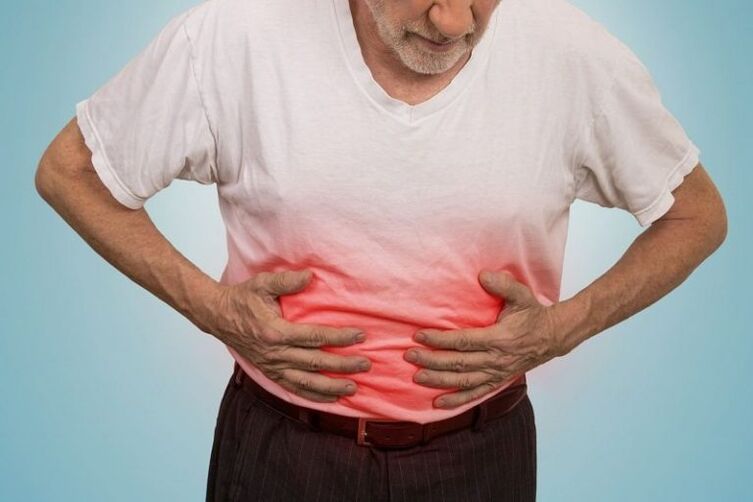
The simplest parasite is an organism adapted to invade and live in the cells and tissues of other organisms. The simplest parasites cannot live on their own in the open environment like other protozoa, but must enter the body of another organism to receive protection and nourishment.
The simplest parasites and their varieties
The simplest organisms are eukaryotic systems that exist as structurally and functionally independent individual cells (including those that cohabit or form colonies). Protozoa develop relatively complex subcellular features (membranes and organelles) that allow them to survive in harsh environmental conditions. Most protozoa are microscopic organisms, and only a few of them grow large enough to be seen with the naked eye. As single-celled eukaryotes, they move around to survive, feed, and reproduce.
There are some of the simplest parasites that cause problems. They are in our food, soil, and water and can make us very sick if they get inside us.
Different types of protozoan parasites can cause different diseases to our body. Some of them can cause serious diseases of the respiratory tract (which carries air from the nose to the lungs) and the central nervous system (brain, cranial nerves and spinal cord), while others live inintestines, causing symptoms such as diarrhea, and not death.

There are four types of protozoan parasites, classified by the way they move:
- irony is a group of amoebas that move using prosthetic legs and contractions that change the shape of their cells;
- mastigophores move with the help of flagellates;
- siliophores use cilia;
- sporozoans are immobile when they are in the adult stage.
Life cycle of protozoa parasites
Most protozoa have great reproductive potential because they have short generation times, undergo rapid sequential development, and produce large numbers of asexual or sexual offspring. These characteristics are responsible for many of the simplest infections, which rapidly cause acute symptoms of the disease.
The developmental stages of protozoa occurring in the host usually include feeding on protozoa and can be found intracellularly (in the host's cells) or extracellularly (in the organs)voids, body fluids or intercellular spaces). Although trophozoites are ideal for their parasitic survival mode, they are not very resistant to external environmental conditions and do not survive long outside of their host. To move from host to host, protozoa use one of four main modes of transmission: direct, oral, transmissible, and predator-to-prey.
Pathways of transmission of protozoan parasites to humans
- Direct transmission of the parasite through intimate body-to-body contact - sexual contact (eg, Trichomonas spake, which causes trichomoniasis in humans).
- Oral transmission via ecologically stable stages of cysts - the parasite travels in the feces of one host and is transmitted by food or water to another (eg, Entamoeba histolytica, Giardia duodenalisand Balantidium coli are both forms of fecal cysts that lead to amoebic dysentery, giardiasis, and balantidiosis).
- Transmission occurs when the parasite is ingested by a blood-sucking arthropod (insect or arachnid) and transferred to a new host by a sting (eg, Trypanosoma brucei, which is transmitted by the tsetse fly and causes sleeping sickness. and Plasmodium spp. haemosporidia, which are transmitted by mosquitoes and cause malaria).
- Predator-to-prey transmission occurs when the simplest parasite is trapped in the tissues of the victim (eg, cows, goats, pigs) and it is eaten by the predator (in the case ofour is a person) eat.
The simplest human parasites and the diseases they cause
Acanthamoeba. This parasite infects a person's eyes or brain and causes exogenous amoebiasis. He can live in any part of the world. People can get it when cleaning contact lenses with tap water.
Babesia. It infects red blood cells and causes a disease called leptospirosis. Different types of parasites live in different parts of the world. It is transmitted by ticks when bitten.
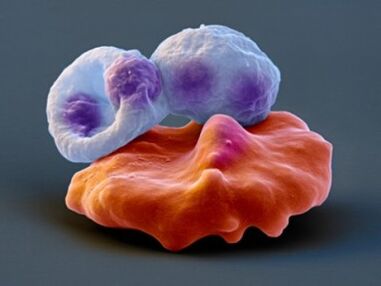
Balantidium (Balantidium coli). Lives in the intestinal lining, causing hairy dysentery, also known as coccidiosis.
Blastocystis disease. This parasite infects the host's intestines. It enters humans through ingestion of contaminated human or animal feces. The disease caused by this parasite is called leukemia.
Cryptosporidium (Cryptosporidium). Lives in the human gut. Distributed worldwide. It enters the human body through ingestion of contaminated human or animal feces.
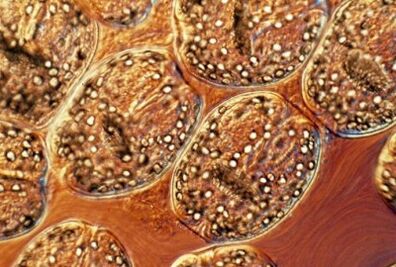
Amoebic dysentery (Entamoeba histolytica). This simplest parasite causes an intestinal infection. Most commonly found in areas with high population density, poor sanitation, and tropical regions. It is transmitted by the fecal-oral route.
Giardia lamblia. Lives in the small intestine. If people consume food or water contaminated with feces, dormant Giardia cysts can infect the body, causing an intestinal infection. It is especially dangerous for children and it is imperative to adhere to the treatment regimen.
Spore production (Isospora belli). Affects epithelial cells of the small intestine. Distributed worldwide. It is transmitted by the fecal-oral route and is the causative agent of isosporia.
Leishmania. Paralyzes one's skin and internal organs. It exists around the world in various forms. Some types of mosquitoes transmit the disease when bitten by a mosquito.
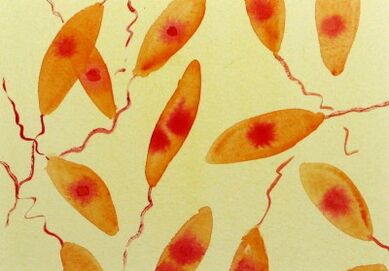
Black skin (Naegleria fowleri). Causes primary amoebic encephalitis, because it lives in the human brain. Infection occurs through contaminated soil, swimming pools and contaminated water.
Plasmodium (Plasmodium falciparum, P. vivax, P. ovale, P. malariae). The parasite invades red blood cells and causes malaria. They exist in tropical regions where the Anopheles mosquito, also known as the Anopheles mosquito.
Rhinosporidium seeberi. It multiplies in the nose and nasopharynx, growing there as spores. It exists in India and Sri Lanka. People who swim in public waters can become infected with the parasite when the nasal mucosa comes into contact with contaminated material.
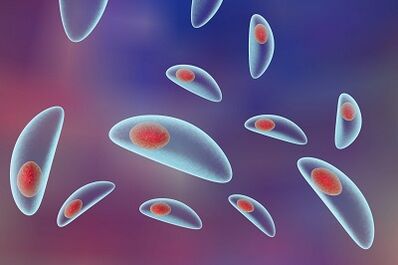
Ringworm (Toxoplasma gondii). Affects liver, heart, eyes and brain. A common parasite around the world. People can become infected after eating raw or undercooked pork, lamb, goat or milk. May also exist in food or soil contaminated with cat feces. The disease caused by this parasite is called toxoplasmosis, or parasitic pneumonia.
Trichomonas (Trichomonas vaginalis). It infects the female genitourinary tract. Symptoms are different in men and women. It is the causative agent of trichomoniasis, a sexually transmitted infection.
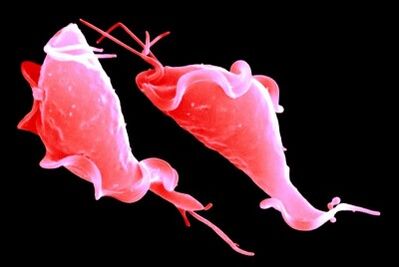
Blood sucking bugs (Trypanosoma brucei, Trypanosoma cruzi). The first type of parasite affects the central nervous system, blood and lymph. It is transmitted by sawtooth flies and causes the so-called sleeping sickness. The latter type of parasite causes Chagas disease by affecting the blood, muscles, nerves, heart, esophagus, and intestines. It is also transmitted through insect bites.
How to treat human protozoan infections?
The treatment plan for a protozoan infection will depend on the specific diagnosis. Usually, your doctor will prescribe medication, such as to treat trichomoniasis, giardiasis, or cryptosporidiosis. Usually, medicines are not prescribed for toxoplasmosis unless there are conditions for the disease in the form of pregnancy, some other illness, or a severe and prolonged infection.
Your doctor may also recommend other treatments to help relieve symptoms. For example, many parasitic infections can cause diarrhea, often leading to dehydration. Therefore, when treating infections caused by protozoa parasites, it is often advisable to drink plenty of water to replenish lost fluids in the body.
How can protozoan parasites be prevented?
There are several steps you can take to reduce your risk of a parasitic infection:
- practice safe sex by using condoms;
- wash your hands often, especially after handling raw food or feces;
- Cook food to the recommended core temperature.
- drink clean water, including bottled water, when you travel;
- avoid swallowing water from lakes, streams, ponds;
- Avoid cat feces and feces during pregnancy.
If you suspect you have a parasitic infection, make an appointment with your doctor. They can help diagnose the cause of your symptoms and recommend a treatment plan. The sooner you start treatment, the sooner you can help stop the spread of the disease to others.





























